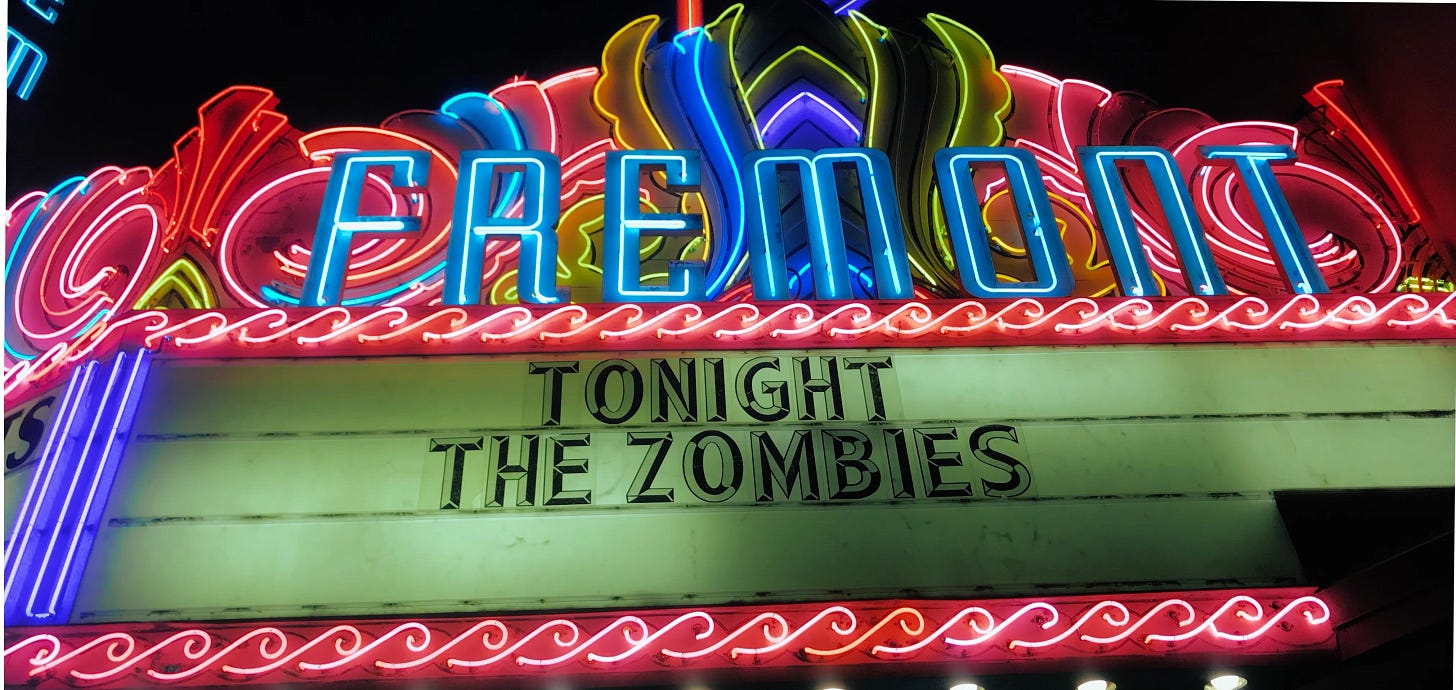The Story Behind "The Art of Oblivion"
How nostalgia not only inspired this short story, but gave it deeper meaning.
On Saturday, October 26th, at 6 p.m., I’m throwing a little book launch party for The Amber Waves of Autumn, a beach noir anthology that includes my short story “The Art of Oblivion.” We’re gathering in the Community Room of the San Luis Obispo Library, and you’re invited!
My stories, I’ve come to believe, spring from at least two places. One place is from inside of me—my past, my experiences, my memories, the people I grieve for and the things I long for. My best stories, I think, deal with the theme of loss in some way or another. It’s a recurring theme in my life.
The other place my stories originate is from outside of me—the things I see and my attempts to understand them or to relate them to my own life.
A couple of weeks ago, I wrote about my short story “The Art of Oblivion” from my perspective as a Californian who fell in love with UC Santa Cruz in the mid-1980s. The inside part of the story came from my desire to return to Santa Cruz for a do-over or to pick up my life where I left it off many years ago. This was a form of loss for me, but through my story and the protagonist, Lydia, I was able to return to that place and time.
Today, I’m going to share with you how this story came to be from a craft perspective.
Internally, I started by unwittingly putting a little piece of myself into the character of Lydia, a girl who runs away from home to return to a place she loved—Santa Cruz, California.
Externally, though, there were things happening around me that fed this story.
I wrote the first draft of “The Art of Oblivion” on November 7, 2017. It started with a bit of nostalgia, hearing a song on the radio—“Time of the Season” from the Zombies’ 1968 album Odessey and Oracle. The song made me feel a certain kind of way. It made me feel sad. It made me think of broken love and broken promises. It made me think of grief and how grief might cause someone to become stuck. I know I projected my own feelings onto this song, but it still makes me feel that way, and I’m feeling sad again just thinking about it.

As I listened to the song, I began to imagine a broken-hearted young woman whose grief is destroying not only her own life, but her daughter’s life. Over the next 18 months, I wrote six drafts of the story this way. I was nearly a year into the revisions when I saw The Zombies live in concert at the Fremont, just down the street from me. It was a still-warm, still-summer evening, and I walked to the theater. It was an incredible experience from beginning to end—how lucky was I to get to hear the song that had inspired my story, performed live while I was still working on my story?

When I workshopped the sixth draft of the story in June 2019, my professor, Mary Yukari Waters, wasn’t buying it. There was something more going on, she said, for my protagonist to be doing the things she does in the story. She is feeling something more than grief. I didn’t understand. Grief is powerful. Isn’t grief alone enough?
I was still thinking about this a couple of weeks later, when I took a trip to Monterey and stayed at my favorite inn, just a block over from Cannery Row. Early mornings, I went for walks and then sat at a table in the breakfast room to write over coffee. One morning, as others filtered into the room, someone turned the television on and tuned into the news. I heard a phrase I’d heard often over the past several years: “Make America great again.”
I recognized the fallacy in this statement. The good old days weren’t always all that good. They weren’t all that good for women. They weren’t all that good for the LGBTQ+ community. They weren’t all that good for my mom, who was stricken with polio before there was a vaccine and who didn’t have the diabetes medication that, today, would have saved her life. The good old days weren’t always all that good. This statement was a manipulation of people who were overworked and underpaid, stressed out and hanging on by a thread, longing for and idealizing a time that seemed simpler and better.

I started researching that phenomenon—idealizing the past—and learned that it can be dangerous to idealize the past. “If we’re fixated on reliving history,” Kevin Bennett, Ph.D., wrote for Psychology Today, “we may resist adapting to the present or embracing the future.”1 In other words, idealizing the past can cause someone to get stuck.
Nostalgia can be fun and pleasant, like going to hear a band from the sixties perform at a theater down the street and hearing some of your favorite old music. But when we idealize the past, we’re not being realistic or even-handed—we remember the good times, but we ignore the fact that there were also bad times. We compare the present to the past, we become increasingly dissatisfied with the present, and we become increasingly unhappy. Perhaps most damaging of all, when we escape into the past like it’s a warm coccoon, we avoid dealing with our problems. This was the “more” that was going on with my protagonist, Lydia, I realized. She was idealizing the past, as we tend to do when we lose someone, and in doing so, she had become stuck.
Over the summer of 2019, I wove this thread throughout the story. This added more depth and meaning. It was no longer the somewhat cliché story I’d originally written. I revised the story four more times—ten times in all. It takes a long time to get a story just right.
I’m thrilled to have this story I’ve worked on for so long out in the world. I hope you enjoy reading it, and if you’re a writer, I hope this helps you find the deeper meaning in your story.
Bennett, Ph.D., Kevin, “Could Too Much Nostalgia Be Bad for Us?”, Psychology Today, 12/31/2023, accessed 10/14/2024, https://www.psychologytoday.com/us/blog/modern-minds/202312/could-too-much-nostalgia-be-bad-for-us.



